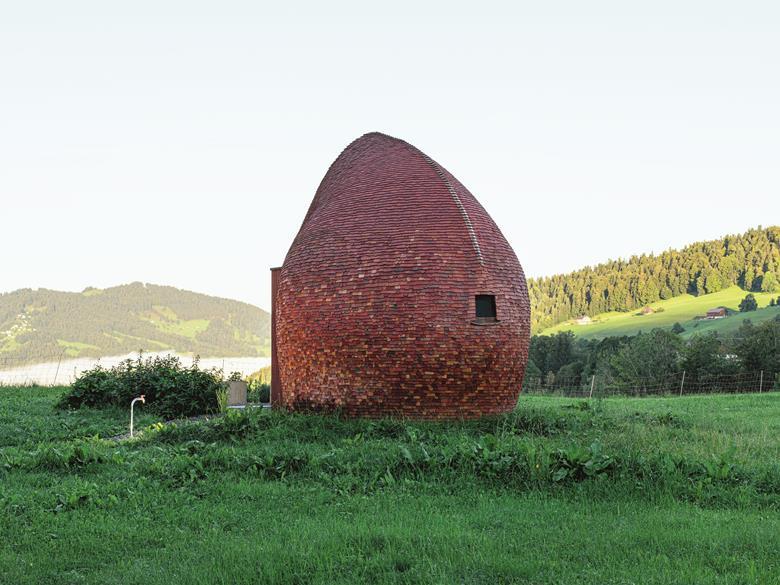 Anna Heringer’s book Form Follows Love: Building by Intuition – from Bangladesh to Europe and beyond is a different approach to architecture where human relationships, local materials and knowledge, inform the creative process. Photographs depict buildings animated by everyday life, where human presence and social interaction take center stage, and the architecture gently recedes into the background.
Anna Heringer’s book Form Follows Love: Building by Intuition – from Bangladesh to Europe and beyond is a different approach to architecture where human relationships, local materials and knowledge, inform the creative process. Photographs depict buildings animated by everyday life, where human presence and social interaction take center stage, and the architecture gently recedes into the background.
The text reveals the philosophical underpinnings that animate her architectural practice. It is a thoughtful exploration of architecture’s potential to foster positive social change, emphasizing the generative power inherent in the building process and the social and ecological significance of material choices.
Heringer’s architectural sensibilities emerge from her childhood and a formative domestic environment where ordinary objects had an intrinsic aesthetic value. She describes this influence directly: “art wasn’t displayed on the walls of our home. But in our daily lives, my father designed things that were necessary in ways that made them beautiful”.
The playful and metaphorical idea that one must sometimes “run a red light — take a calculated risk” inherited from her father, manifests as a series of mindful, intuitive and calculated transgressions against the prevailing standards and norms in architecture.
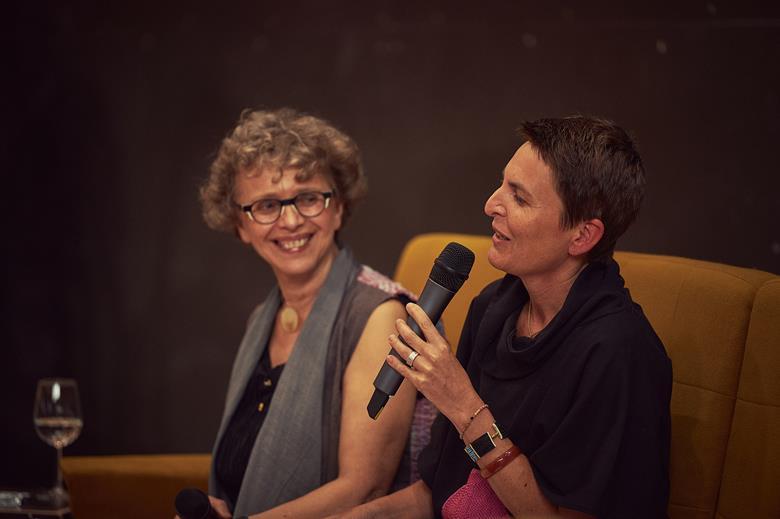 She speaks of the “beautiful houses of mud” built by many hands, their modest scale and material intimacy leaving a lasting impression.
She speaks of the “beautiful houses of mud” built by many hands, their modest scale and material intimacy leaving a lasting impression.
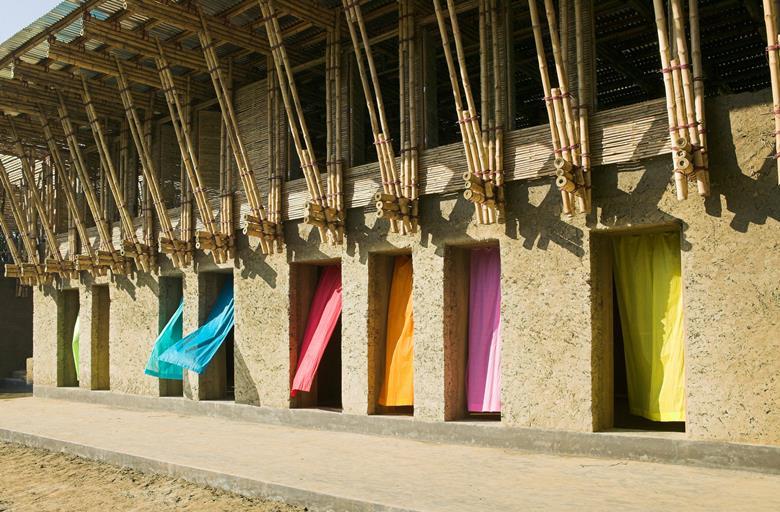 She says “This is what I try to do with my architecture: value local potential, available materials, and existing knowledge”. This conceptual foundation threads through the book, shaping each architectural intervention.
She says “This is what I try to do with my architecture: value local potential, available materials, and existing knowledge”. This conceptual foundation threads through the book, shaping each architectural intervention.
 Heringer embraces an “irregular rhythm” in her built works which marks a distinct alternative that puts organic variations over rational, mechanical repetitions.
Heringer embraces an “irregular rhythm” in her built works which marks a distinct alternative that puts organic variations over rational, mechanical repetitions.
She notes that “architects are so often trained to focus completely on designing the final product… designing the process is not enough of a topic in our education. The process is just as important as the outcome”. Therefore, the participatory methodologies embedded within Heringer’s architectural approach invite reflection.
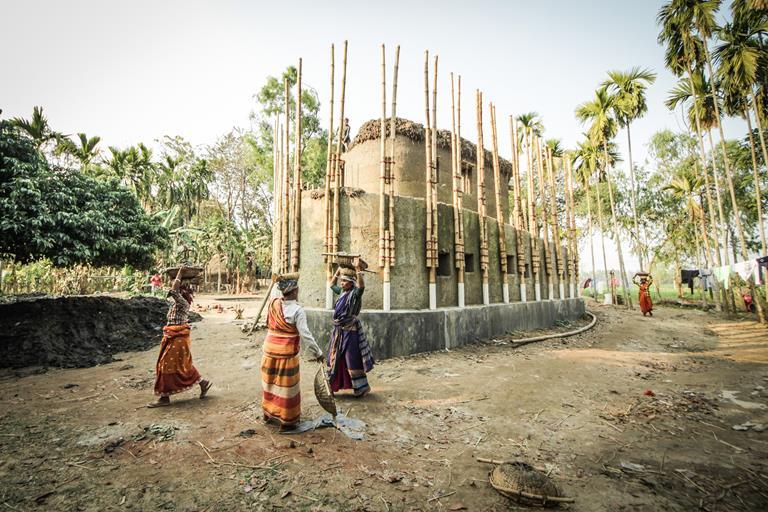 She observes, “those who come to a place with money, power and academic knowledge often dismiss local potentials and build in concrete or brick, as if existing traditions aren’t good enough”. This material hierarchy functions as a spatial manifestation of knowledge suppression, whereby imported construction technologies supersede indigenous building practices — not due to technical superiority, but through their associations with institutional authority.
She observes, “those who come to a place with money, power and academic knowledge often dismiss local potentials and build in concrete or brick, as if existing traditions aren’t good enough”. This material hierarchy functions as a spatial manifestation of knowledge suppression, whereby imported construction technologies supersede indigenous building practices — not due to technical superiority, but through their associations with institutional authority.
 A workshop she conducted revealed the healing power inherent in working with mud. She explains that “there are different techniques which can trigger different emotions. Those who have too much energy and feel a lot of anger can let off steam by compacting the earth with ramming, releasing aggressive impulses. More gentle emotions are released during plastering work, when you almost caress the walls in order to make beautiful surfaces and add ornamentation”.
A workshop she conducted revealed the healing power inherent in working with mud. She explains that “there are different techniques which can trigger different emotions. Those who have too much energy and feel a lot of anger can let off steam by compacting the earth with ramming, releasing aggressive impulses. More gentle emotions are released during plastering work, when you almost caress the walls in order to make beautiful surfaces and add ornamentation”.
 Something quite striking, yet extremely refreshing and unique when reading this book, is Heringer’s willingness to share her vulnerabilities and uncertainties. She openly discusses failing architectural exams, losing herself in superficial parameters, acknowledges the artificiality of her early design processes when it was formalistic with an inserted social value, and even questions her role as “a white woman… build[ing] in Africa or Asia, considering the history of colonization”.
Something quite striking, yet extremely refreshing and unique when reading this book, is Heringer’s willingness to share her vulnerabilities and uncertainties. She openly discusses failing architectural exams, losing herself in superficial parameters, acknowledges the artificiality of her early design processes when it was formalistic with an inserted social value, and even questions her role as “a white woman… build[ing] in Africa or Asia, considering the history of colonization”.
 Form Follows Love, constitutes not merely documentation of built works but a critical intervention in architectural discourse, proposing alternative methodological, material, and ethical frameworks for the contemporary architectural landscape. For students, practitioners, and all those engaged with the built environment, this book offers a timely and critical reminder that architecture, at its most meaningful, is not an act of imposition but a practice of cultivating relationships — with materials, with place, with communities, and, ultimately, with the self.
Form Follows Love, constitutes not merely documentation of built works but a critical intervention in architectural discourse, proposing alternative methodological, material, and ethical frameworks for the contemporary architectural landscape. For students, practitioners, and all those engaged with the built environment, this book offers a timely and critical reminder that architecture, at its most meaningful, is not an act of imposition but a practice of cultivating relationships — with materials, with place, with communities, and, ultimately, with the self.
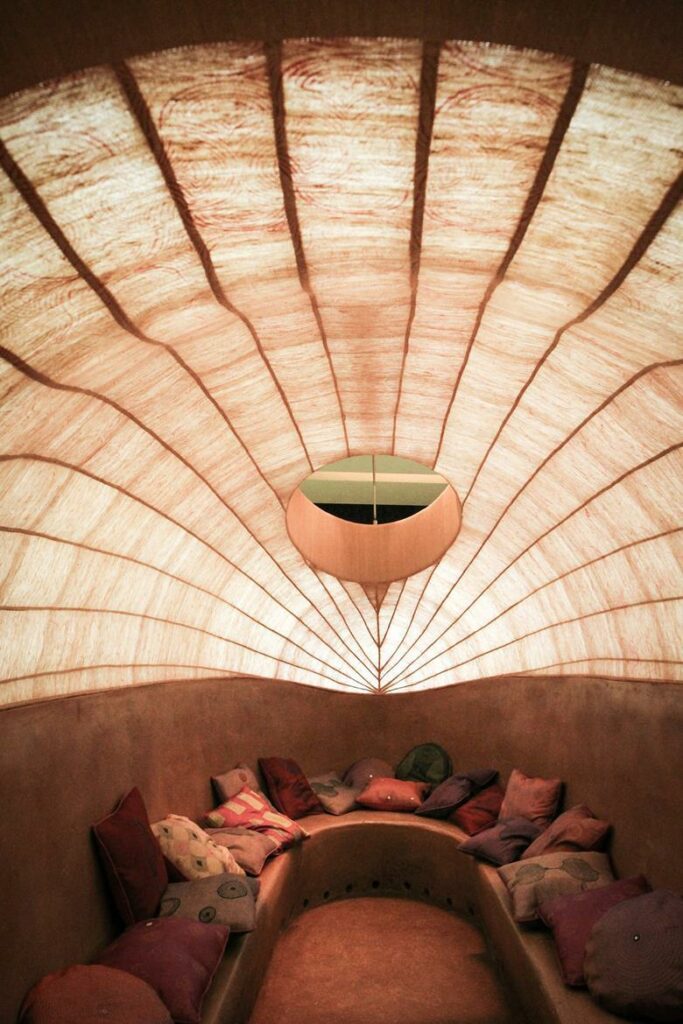 You can read the original article at www.bdonline.co.uk
You can read the original article at www.bdonline.co.uk

